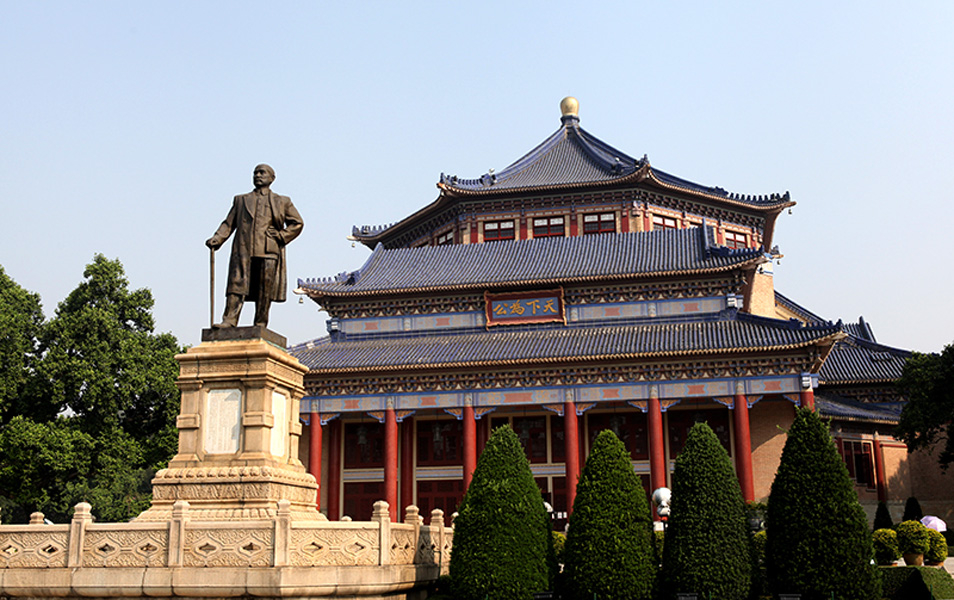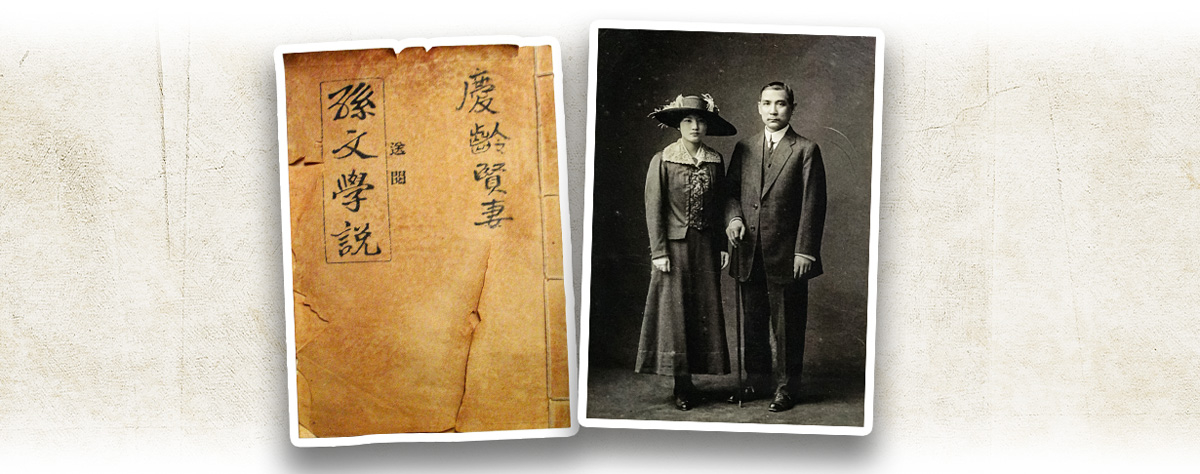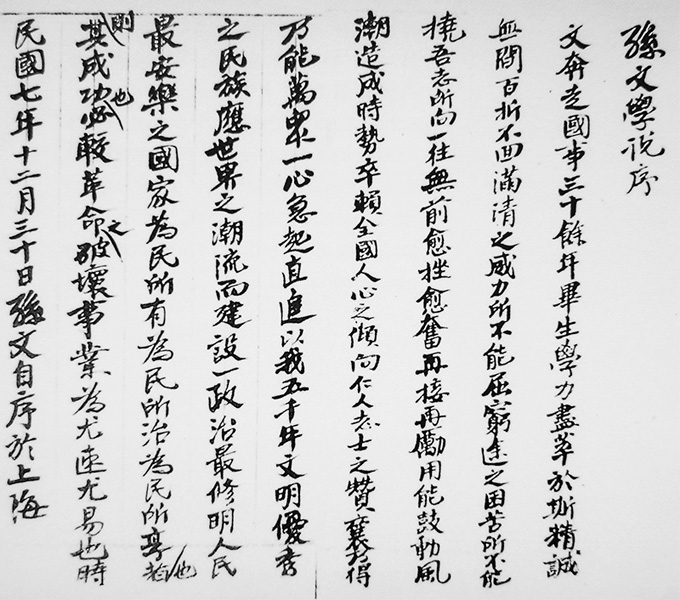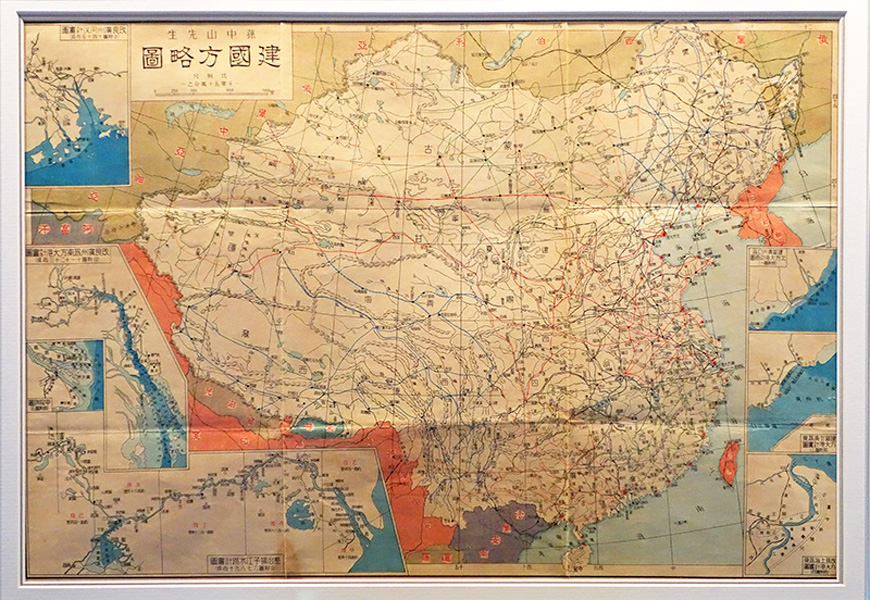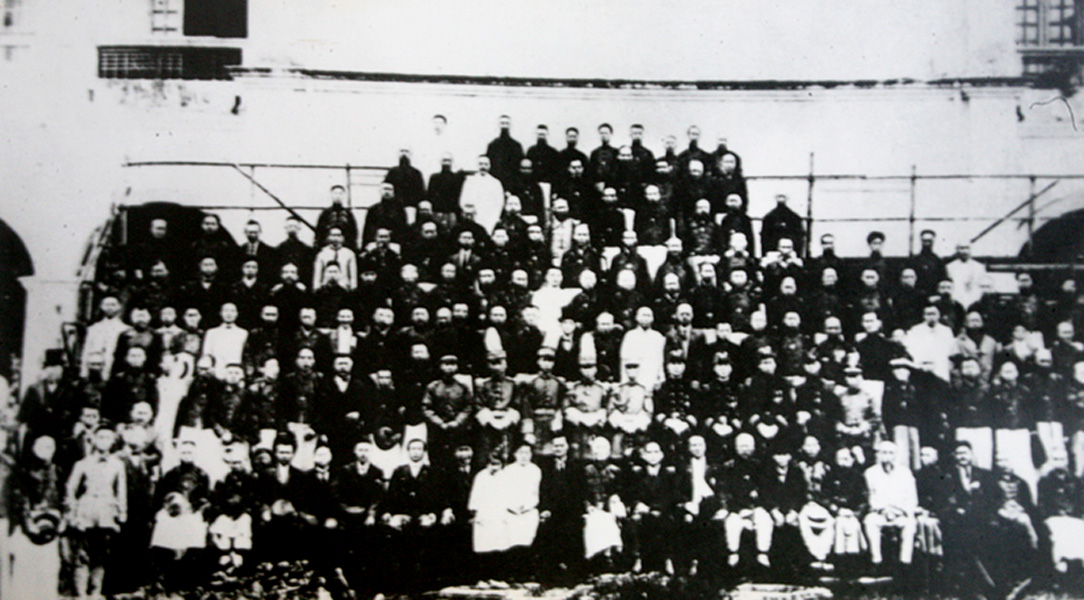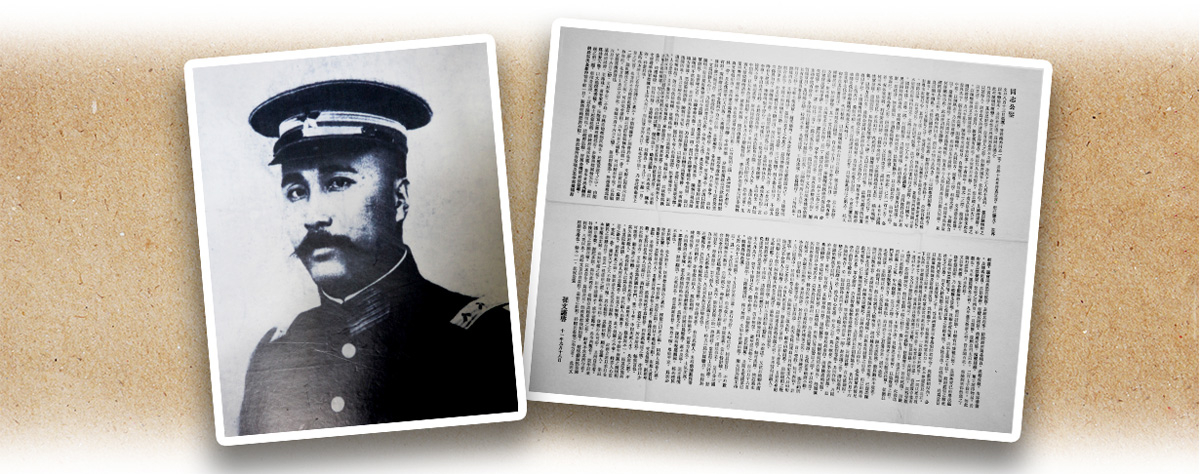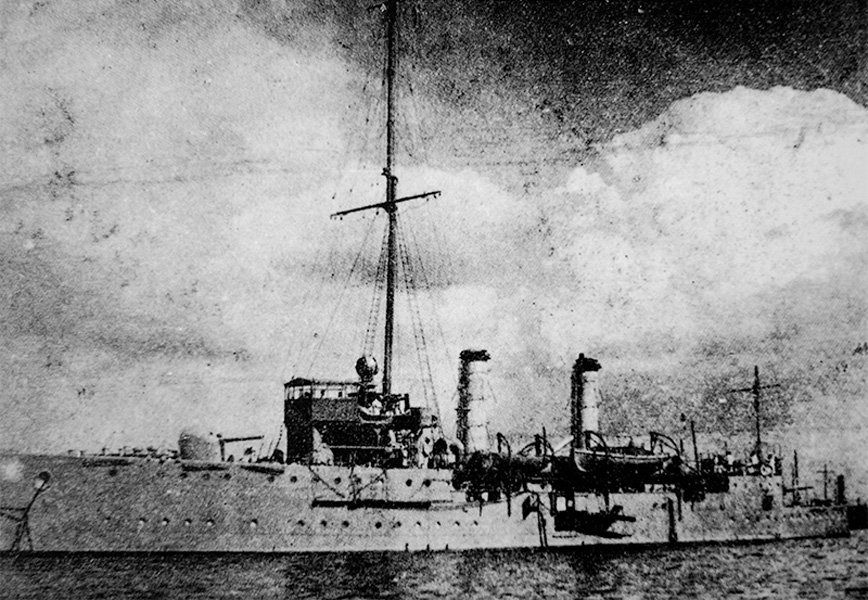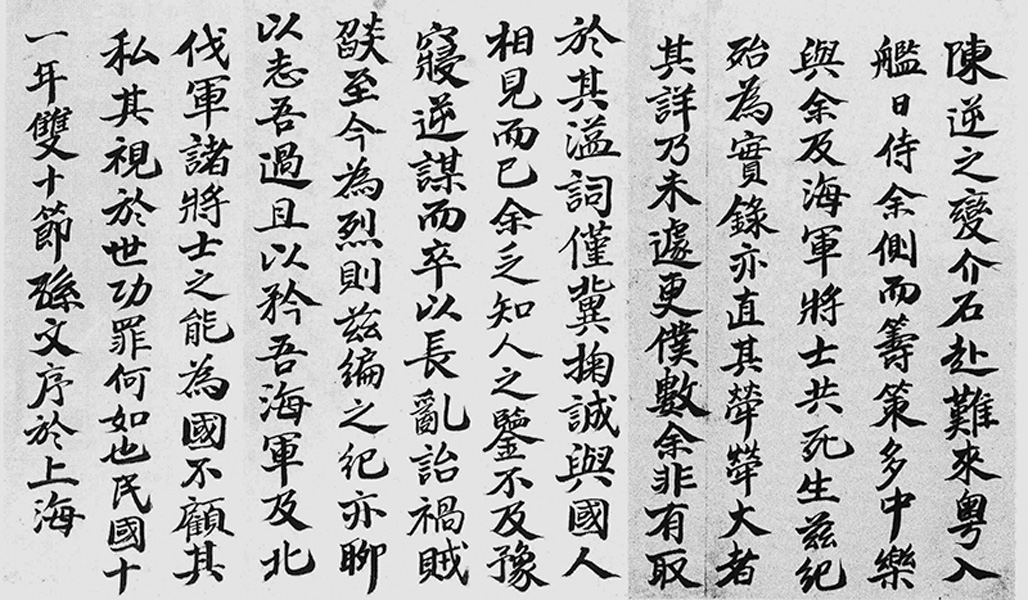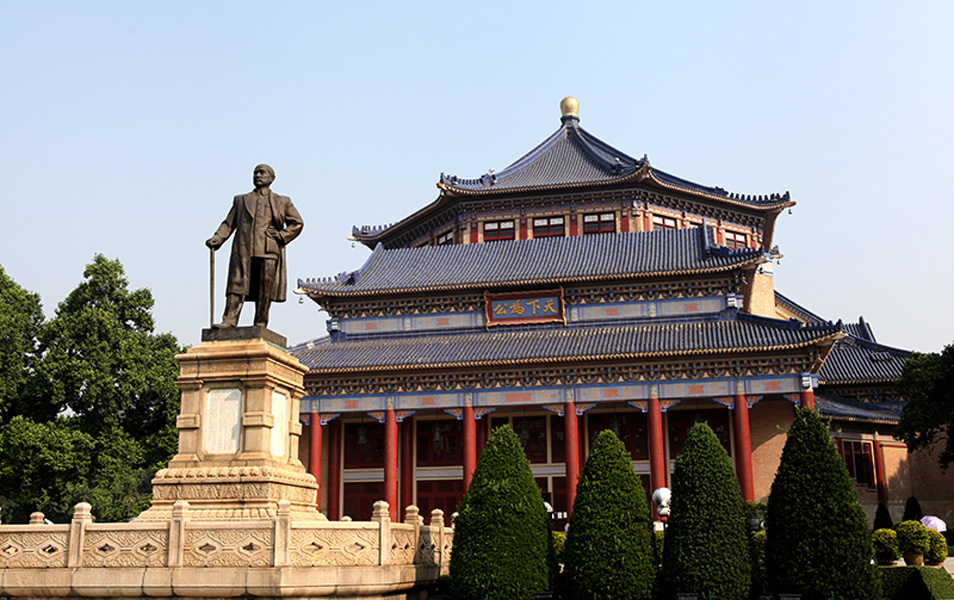The beginning of the Republic of China was bumpy. Sun Yat-sen (孫中山), the pioneer of the 1911 Xinhai Revolution (辛亥革命) and the Republic of China, underwent a difficult course both in thought and action. However, the undaunted Sun continued to devote himself to exploring the revolution’s future course and its theories.
Between 1917 and 1920, Sun completed the works A Parliamentary Law (《民權初步》), The Doctrine of Sun Wen (《孫文學說》), and The International Development of China (《實業計劃》) – which were later incorporated into The Plans for National Reconstruction (《建國方略》). In The Plans for National Reconstruction, Sun outlined plans to transform China into a country where its people could live in peace under an honest and clean government.
Besides writing, Sun continued to drive the revolution. In 1919, he restructured the Chinese Revolutionary Party (中華革命黨) into the Kuomintang of China (KMT, 中國國民黨). In 1920, he returned to Guangzhou (廣州) and took up office as Extraordinary President of the Republic of China in the year that followed. This triggered a standoff between the Guangzhou-based Republic of China and the Beijing-based (北京) Beiyang Government (北洋政府). Despite Sun’s position, the Guangdong (廣東) warlord Chen Jiongming (陳炯明) was the one who held de facto power in the Guangzhou government. In 1922, Chen launched a coup and drove Sun from Guangzhou.
Sun’s repeated setbacks convinced himself that both the northern and southern warlords were as bad as each other, and could not be relied upon to take the revolution forward. He believed that the revolutionary ideals were important, yet the new priority should be building a well-organised, disciplined, and armed revolutionary party as well as gaining public support. He strongly opposed the theory of “the revolutionary army rises and the revolutionary party fades”. Instead, he believed that a party must have its own army, and both military power and revolutionary ideals were mutually supportive and indispensable in nation-building. He also recognised the value and the need of learning from foreign revolutionary experiences, and began to look at the 1917 Russian Revolution as a successful model.
|
|
Why was Sun Yat-sen convinced that both the southern and northern warlords were as bad as each other, and that a revolutionary party must have its own army? |
|
|
See answer below. |
A modern-day photo of Sun Yat-sen’s former residence in Shanghai (上海). In 1918, Sun moved here with his wife Soong Ching-ling (宋慶齡), where he devoted himself to exploring the revolution’s future course and its theories.
Between 1917 and 1920, Sun Yat-sen completed the works A Parliamentary Law, The Doctrine of Sun Wen and The International Development of China. On the left: a promotional copy of The Doctrine of Sun Wen from Sun to Soong; on the right: a wedding photo of Sun and Soong. The two wedded in 1915. In 1922, a coup launched by Chen Jiongming forced the couple to flee Guangzhou. Regrettably, Soong miscarried during the escape and never conceived ever since.
The Doctrine of Sun Wen is prefaced by Sun Yat-sen’s aspiration: “As the fine descendants of a 5,000-year-old civilisation, we should join the global trend in building the most peaceful country ever, one run by the cleanest government, in which our people could live as its citizens, rulers, and beneficiaries.”
The Map Based on Sun Yat-sen’s The Plans for National Reconstruction (《孫中山先生建國方略圖》) by the modern cartographer Tu Sicong (屠思聰) is based on the economic development plans envisioned by Sun’s work.
While writing, Sun Yat-sen continued to drive the revolution. In 1919, he reorganised the Chinese Revolutionary Party into the Kuomintang of China (KMT). In 1920, he returned to Guangzhou. On 5 May 1921, he took up office as Extraordinary President of the Republic of China in Guangzhou (pictured above is a group photo taken at the inauguration ceremony on that day). For a time, two governments – one in Guangzhou and one in Beijing – coexisted in China.
Sun Yat-sen was not without staunch supporters in the Guangzhou government. One of them was Xu Chongzhi (許崇智). From left to right: a photo of Xu and a calligraphy scroll Sun gifted him.
Xu Chongzhi studied at the Imperial Japanese Army Academy in Japan. In 1906, he entered the anti-Qing revolution as a member of the United League (同盟會). In 1913, he participated in the Second Revolution (二次革命), then joined the Chinese Revolutionary Party led by Sun Yat-sen in the following year. He was a participant in the 1915 National Protection War (護國戰爭) against Yuan Shikai (袁世凱), and a supporter of Sun’s 1917 Constitutional Protection Movement (護法運動). When Sun served as Extraordinary President of the Republic of China in Guangzhou between 1921 and 1922, he staunchly supported Sun’s idea of uniting the country by force. Chen Jiongming launched a coup in 1922, Xu fought against Chen in the following year. In 1925, he assaulted Chen again on Sun’s order and crushed his main force. In 1939, he moved to Hong Kong. During the Japanese occupation of Hong Kong in 1941, he was detained by the Japanese, who forced him to support the Japanese puppet government headed by Wang Jingwei (汪精衛). However, Xu would rather die to follow, and eventually smuggled himself to Macao. In 1965, he passed away from illness in Hong Kong.
Sun Yat-sen was the head of the Guangzhou government, yet Chen Jiongming was the one with de facto power as he commanded the military. Chen advocated making China a federation of self-governing provinces (聯省自治) and opposed Sun’s plan to unite the country via the Northern Expedition (北伐). On 16 June 1922, Chen launched a coup and drove Sun from Guangzhou. On the left: a photo of Chen; on the right: The Letter to My Comrades (《致同志書》), an article published by Sun in Shanghai on 18 September 1922 detailing Chen’s rebellion.
During Chen Jiongming’s coup in June 1922, Sun Yat-sen fled the Presidential Palace and boarded the warship SS Yongfeng (pictured). It was later renamed the SS Zhongshan in honour of Sun (Zhongshan was another name of Sun).
During Chen Jiongming’s coup, Chiang Kai-shek (蔣介石) joined Sun Yat-sen on the SS Yongfeng. He led the naval force to fight back along the river against Chen’s troops until Sun was out of danger. After the incident, Sun penned the foreword for Chiang’s book titled President Sun’s Ordeal in Canton (《孫大總統廣州蒙難記》). In it he praised Chiang, “He was staying by my side and coming up with plans and tactics that proved effective most of the time, willing to live and die together with me and the naval officers.” From then on, Sun came to trust and rely on Chiang.
A modern-day photo of the Zhongshan Memorial Hall (中山紀念堂) in Guangzhou. The Presidential Palace of Guangzhou, where Sun Yat-sen served as Extraordinary President of the Republic of China, used to stand at the site. The palace was destroyed by Chen Jiongming’s bombings during the coup in 1922. It was rebuilt into the present memorial hall between 1929 and 1931. Sun’s trials and tribulations after the 1911 Xinhai Revolution led him to reflect on the course of China’s revolution. Chen’s coup convinced him that he must build a well-organised, disciplined, and armed revolutionary party that was supported by the people. He began to look at the 1917 Russian Revolution a successful model.
|
|
Why was Sun Yat-sen convinced that both the southern and northern warlords were as bad as each other, and that a revolutionary party must have its own army? |
|
|
Sun recognised the need for an army in support of the revolution. Before the 1911 Xinhai Revolution, he planned and led no less than 10 anti-Qing armed uprisings, and was well aware that a mutiny by his revolutionary comrades within the Chinese New Army had made the Wuchang Uprising (武昌起義) possible. After the birth of the Republic, the fact that the revolutionaries lacked sufficient military power forced them to cede the presidency to Yuan Shikai and later cost them the Second Revolution. While Yuan’s downfall at the hands of the National Protection Army was a stroke of luck, the Beiyang clique remained in power, and its continual efforts to undo whatever the revolution had achieved called for a war to protect the Constitution. Although Sun was made the Generalissimo in Guangzhou during the Constitutional Protection Movement, the warlords of south-eastern China did not actually identify with the Constitution. Once they had secured their power and domains, they colluded with the Beiyang clique to undermine the Constitutional Protection Movement. Against Sun’s orders, they implemented peace negotiations and declared a truce with their opponents in the North. Later, they also sidelined Sun by forming a separate centre of power called the “Alliance of Provinces to Constitutional Protection of the Republic of China (中華民國護法各省聯合會)”. Sun lacked substantial military support within the Guangzhou Junta, and eventually reached a point when his orders were ineffective beyond the Generalissmo’s Mansion. By early 1918, the Yunnan clique (滇系) styled itself the commander-in-chief of the eight-province alliance formed by Sichuan (四川), Yunnan (雲南), Guizhou (貴州), Hubei (湖北), Henan (河南), Shaanxi (陝西), Hunan (湖南), and Fujian (福建). On 4 May of the same year, the embittered Sun resigned to the Extraordinary Parliament. In a telegram, he revealed the south-western military cliques’ plans to sabotage the Constitutional Protection Movement and sombrely informed the Chinese people, “There is no greater scourge on our country than these power struggles between military men. The southern and northern warlords are as bad as each other.” The Constitutional Protection Movement gradually drifted into irrelevance afterwards. In 1921, with support from the Guangdong army commander Chen Jiongming, Sun set up a government in Guangzhou and took up office as Extraordinary President. However, Chen’s coup in 1922 derailed Sun’s revolutionary plans again. After all these setbacks, Sun became convinced that a revolutionary party could not depend on warlord cliques but its own army. |
Source of most photos used in this feature piece: Fotoe




